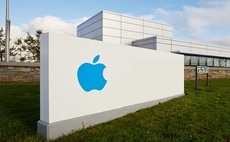Consultancy Point to Point reveals how going off piste is easier for users than staying on the corporate-approved track
A recurring theme at the Enterprise Mobility Summit 2014 has been that communication and fostering cultural change from the ground up is a far bigger factor in a successful mobility programme than ...
To continue reading this article...
Join Computing
- Unlimited access to real-time news, analysis and opinion from the technology industry
- Receive important and breaking news in our daily newsletter
- Be the first to hear about our events and awards programmes
- Join live member only interviews with IT leaders at the ‘IT Lounge’; your chance to ask your burning tech questions and have them answered
- Access to the Computing Delta hub providing market intelligence and research
- Receive our members-only newsletter with exclusive opinion pieces from senior IT Leaders























